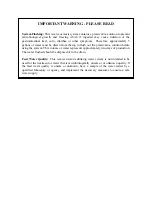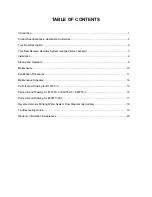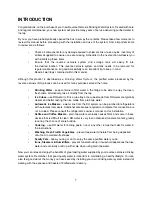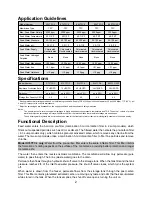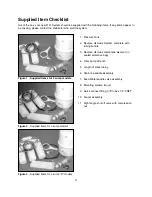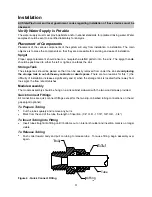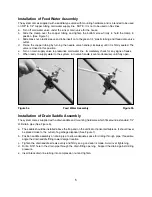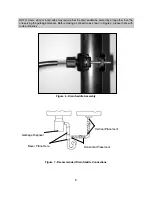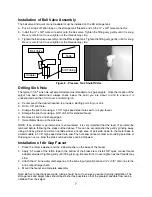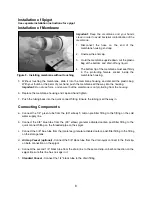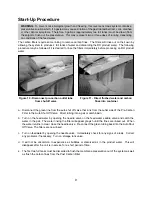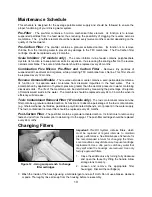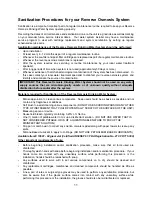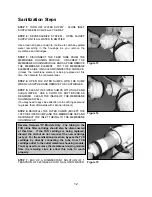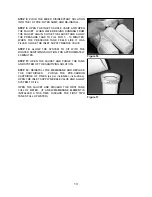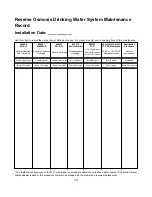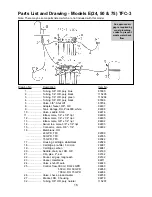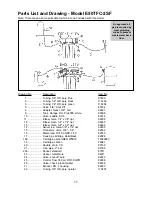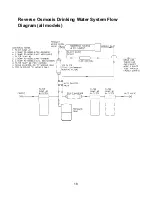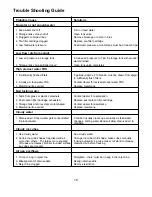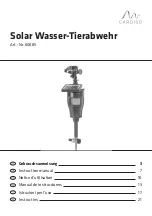
11
Sanitization Procedures for your Reverse Osmosis System
Sanitization is a simple but important part of a regular maintenance routine required to keep your Reverse
Osmosis Drinking Water System operating properly.
Recording the dates of all maintenance and sanitization done on the unit is a good idea as well as marking
on your calendar future service interval dates. Your water system installer may have a maintenance
service program to deal with cartridge replacement and system sanitization by setting up regular
scheduled service calls.
Sanitization maintenance of the Reverse Osmosis Drinking Water System should be performed:
•
Upon installation
•
At least every 6 - 12 months as part of a regular maintenance routine.
•
Whenever the pre-filter and post-filter cartridges are replaced as part of a regular maintenance routine.
•
Whenever the reverse osmosis membrane is replaced.
•
After the system requires any servicing or routine maintenance by your local water treatment
specialist.
•
After long periods of time when system is not used (approximately 30 days or more)
•
Whenever evidence of harmful bacteriological contamination of the system has been discovered. In
this case contact your local water treatment specialist to disinfect your reverse osmosis system, and
identify and eliminate the source of contamination.
Materials required for Sanitization of the Reverse Osmosis Drinking Water System:
•
Mild soap solution to clean various components. Soap used should be as basic as possible and not
contain any fragrances or additives.
•
Soft brush to assist cleaning various components. (DO NOT USE SCOURING PADS OR ANY OTHER
TYPE OF INSTRUMENT THAT COULD POTENTIALLY SCRATCH THE SURFACES OF THE UNIT.)
•
Measuring spoon or device.
•
Household bleach, typically containing 5.25% of chlorine.
•
One (1) Gallon of potable water to mix up a disinfectant solution. (DO NOT USE WATER THAT IS
NOT CONSIDERED POTABLE OR IS OF A QUESTIONABLE NATURE TO MIX UP THE
DISINFECTANT SOLUTION)
•
Drip pan or catch basin to collect any solution or water spilled along with paper towels to cleanup any
spills.
•
Silicone Based Lubricant to apply to O-Rings. (DO NOT USE PETROLEUM BASED LUBRICANTS)
Available Item # 13691 - 60 gram vial (Certified ANSI/NSF 61, FDA Registration No. 21 CFR 715.300)
Other important requirements of note:
•
Before beginning installation and/or sanitization procedure, make sure that all tools used are
disinfected.
•
Thoroughly wash hands with soap before beginning installation and/or sanitization procedure. If your
hands come into contact with any unsanitary surface while performing this procedure or the
installation, hands should be rewashed with soap.
•
Any surfaces used to work with to set various components on to dry, should be cleaned and
disinfected.
•
Any replacement cartridges, membranes and cleaned components should be handled as little as
possible.
•
A new pair of latex or surgical type gloves may be used to perform any sanitization procedure, but
also be aware that if the gloves surface comes into contact with any unsanitary surface while
performing this procedure or the installation, the gloves should also be re-disinfected or replaced.
IMPORTANT: This Reverse Osmosis Drinking Water System should not be used on any water
supply sources that are microbiologically unsafe or of unknown quality without adequate
disinfection before and/or after the system.



